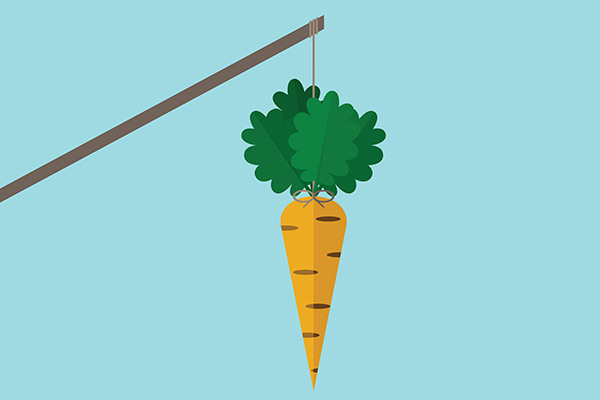Table of Contents
HEALTHY EATING
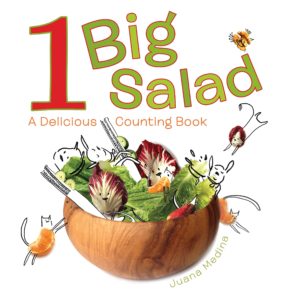 |
Juana Medina’s 1 Big Salad (Viking, 2016) is a clever counting book of animated salad veggies, starting with one avocado deer and two radish mice. For ages 3-6. |
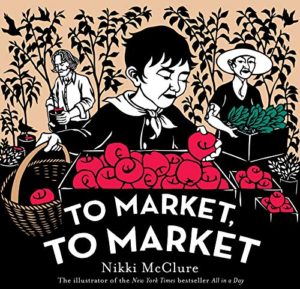
|
Where does our food come from? Nikki McClure’s To Market, To Market (Harry N. Abrams, 2011) follows a boy and his mother as they shop at the local farmer’s market – learning from each farmer about the origins of each food (honey, cheese, kale). For ages 4-7. |
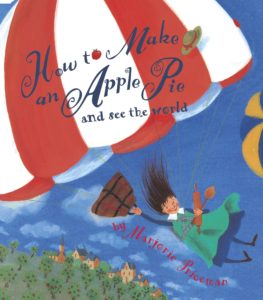
|
Marjorie Priceman’s How to Make an Apple Pie and See the World (Dragonfly, 1996) is a whirlwind tour of the world in search of the ingredients for an apple pie. Recipe included. For ages 4-8.
Also by Priceman, see How to Make a Cherry Pie and See the U.S.A. (2013). |
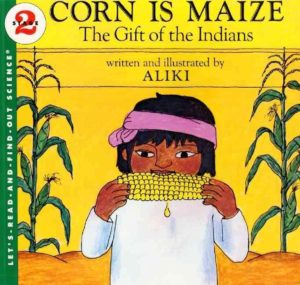 |
Aliki’s Corn Is Maize: The Gift of the Indians (HarperCollins, 1986), one of the Let’s-Read-and-Find-Out Science series, explains how an unpromising wild grass became one of the worlds’s most important food crops. For ages 4-8. |
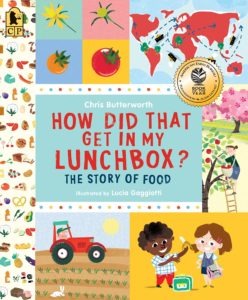 |
By Chris Butterworth, How Did That Get in My Lunchbox? (Candlewick, 2011) answers questions kids have about where food comes from: Where did the bread in my sandwich come from? What about the cheese? The chocolate in my cookie? For ages 5-8. |
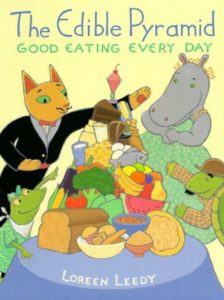
|
Loreen Leedy’s The Edible Pyramid: Good Eating Every Day (Holiday House, 2007) is a re-issue of an old favorite, now featuring the updated (vertically striped) food pyramid from the U.S. Department of Agriculture. The Edible Pyramid is a restaurant where hungry animal customers (including a chocolate-fudge-craving hippo) are helped with their menu choices by a nutrition-savvy cat waiter. For ages 4-8. |
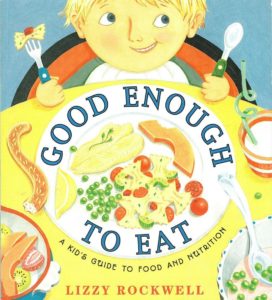
|
Lizzy Rockwell’s Good Enough to Eat: A Kid’s Guide to Food and Nutrition (HarperCollins, 2009) is a cheerfully illustrated guide to healthy eating, variously covering essential nutrients, food groups, the digestive process, the definition of a calorie, and the importance of a good breakfast. There’s also an explanation of just why you can’t live on candy and a handful of healthy kid-friendly recipes. For ages 5-9. |
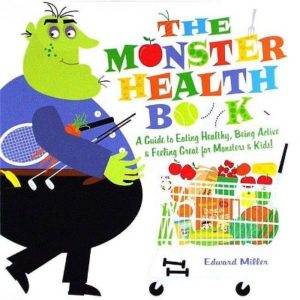
|
Edward Miller’s humorously illustrated The Monster Health Book (Holiday House, 2008) features a fat chartreuse monster making healthy food and lifestyle choices. The book covers food groups, nutrition, calories, exercise, and other assorted health issues. Included are lots of fun food facts. For ages 7-10. |
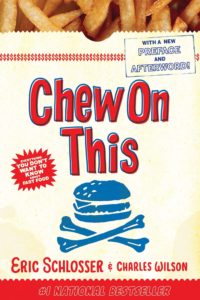
|
Eric Schlosser and Charles Wilson’s Chew on This: Everything You Don’t Want to Know About Fast Food (Sandpiper, 2007) is an adaptation of Schlosser’s best-selling Fast Food Nation for kids. Packed with information and fascinating facts, it’s an eyeopener. Be prepared to go off Chicken McNuggets forever. For ages 11-14. |
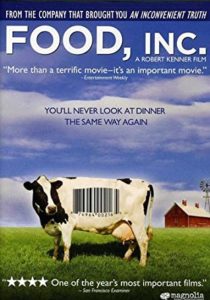 |
Food, Inc., a film documentary based on the Schlosser’s book and on Michael Pollan’s The Omnivore’s Dilemma (Penguin, 2007) is available from Netflix and Amazon.com. Rated PG. |

|
Michael Pollan’s The Omnivore’s Dilemma for Kids: The Secrets Behind What You Eat (Dial 2009) is a shortened version of the superb adult book, similarly divided into four sections covering “The Industrial Meal,” “The Industrial Organic Meal,” “Local Sustainable,” and “The Do-It-Yourself Meal,” which last involves hunting and gathering. For ages 12 and up. |
| Also by Pollan, see In Defense of Food: An Eater’s Manifesto (Penguin, 2009). | |
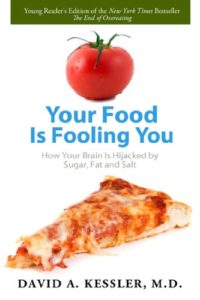 |
David A. Kessler’s Your Food is Fooling You (Roaring Brook, 2012) explains how our brain chemistry is altered by consuming foods high in sugar, fat, and salt – and how this leads to overeating. Targeted at teens. |
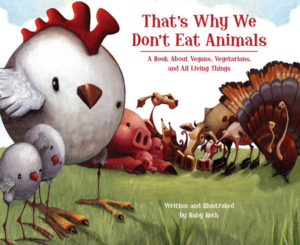
|
Ruby Roth’s That’s Why We Don’t Eat Animals (North Atlantic Books, 2009) is a book about veganism and vegetarianism, factory farms, and the impact of meat-eating on the environment for ages 7-11. No matter what your lifestyle, the ethics of meat-eating is an issue worth discussing. |
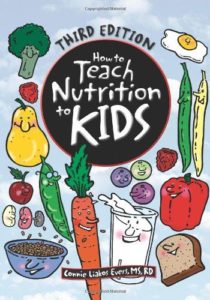
|
How to Teach Nutrition to Kids by nutritionist/educator Connie Evers (24 Carrot Press, 2006) is a 200+-page compendium of information and activities for ages 6-12, with nutritional connections to language arts, science, social studies, the performing arts, cooking, and physical education. Visit the How to Teach Nutrition to Kids website for additional information, games and activities for kids, and a newsletter. |
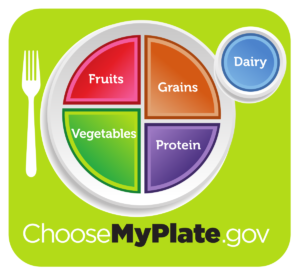 |
From the USDA, MyPlate has information, nutrition-related activities, recipes, and a guide to MyPlate, a new nutrition icon designed to help kids and families make healthy food choices. Included is a resource library of lesson plans and educational materials. |
| The Michigan Team Nutrition Booklist has hundreds of categorized and annotated titles for preschool and early elementary readers on food, healthy eating, gardening, and exercise. | |
| Carol Hurst’s Children’s Literature Site has instructions and fill-in-the-blank forms for a library Nutrition Book Hunt, in which kids are challenged to track down picture books or novels featuring fruits, vegetables, grains, meats, beans, eggs, or nuts. (Suggested answers included.) |
